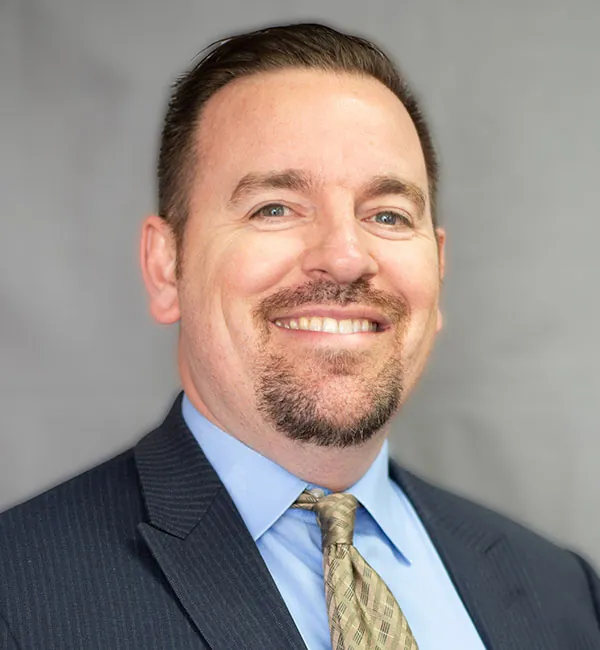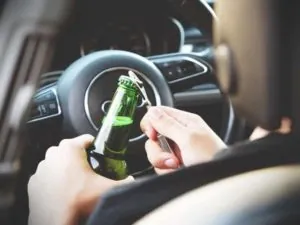In April 2023, the Buckeye State transitions from having one of the narrowest and weakest cell phone laws in the nation to enacting one of the broadest and strongest of such provisions.
“Signing this bill today is a great honor because this legislation will, without a doubt, prevent crashes and save lives,” Governor Mike DeWine remarked. “Right now, too many people are willing to risk their lives while behind the wheel to get a look at their phones. My hope is that this legislation will prompt a cultural shift around distracted driving that normalizes the fact that distracted driving is dangerous, irresponsible, and just as deadly as driving drunk.”
“My prayer is that this law will save lives. We can do nothing to bring our Maria back, but we are determined to keep other families from going through the nightmare of losing a child or a loved one on our roadways,” echoed WBNS sports anchor Dom Tiberi. He, along with his wife, Terri, founded the Maria Tiberi Foundation in honor of their late daughter, who was killed in a distracted driving accident.
Although distracted driving is known to be underreported, the Ohio State Highway Patrol reports that there have been at least 73,945 distracted driving crashes in Ohio since 2017. Read on to find out more about the new distracted driving law changes.
Finding the Right Lawyer
Stronger criminal laws punish offenders and often change driver behavior. However, criminal courts do nothing to compensate personal injury victims. That is basically what a civil claim is all about.
A successful personal injury claim, whether distracted driving or something else caused that injury, always begins with the right Hamilton personal injury lawyer. Your attorney should have the right combination of:
- Accessibility: Do not expect your lawyer to be instantly available 24/7/365. If a lawyer has that kind of accessibility, there is probably a reason the lawyer has few clients. However, your lawyer, and not a legal assistant or less-experienced associate, should be available to answer your questions.
- Dedication: Attorneys who focus on injury law are committed to upholding clients’ rights. They are also familiar with all local written and unwritten procedural rules. If your attorney branches out into a related field, like criminal defense, that is even better.
- Experience: At law school, students learn to think like lawyers. As they practice, these individuals learn how to act like lawyers. Case evaluation and analysis are important, but it means nothing without aggressive representation.
Do not settle for just any lawyer, and do not keep looking for the “perfect” lawyer. The right legal partner is essential, but injury victims have a limited amount of time to act. You’ll need a lawyer who can teach you about distracted driving law changes.
For a free legal consultation, call 513-894-3333
Car Crash Injuries
The sheer number of distracted driving wrecks is only part of the issue. In a catastrophic (life-threatening) matter, the average injury-related medical bills in a distracted driving crash usually exceed $100,000.
Transportation
Usually, medical bills begin piling up before doctors see victims. A short ambulance ride could cost thousands of dollars. A brief helicopter medevac flight could cost ten times that much.
Disputes with insurance adjusters also begin at this point. Generally, adjusters approve the next-lowest level. For example, if a victim was airlifted from the accident scene to a local hospital, insurance adjusters claim that a surface ambulance would have sufficed, and they refuse to cover the difference.
Furthermore, transportation from the scene to a hospital usually is not the only medical transportation expense. Frequently, especially in semi-rural areas of Ohio, emergency responders transport victims to small, local hospitals. They are the closest available treatment centers. The small local hospital stabilizes victims and then sends them to regional trauma centers. So, the cost keeps piling up.
The disputes keep piling up as well, usually for the same reasons mentioned above. So, by the time a victim is under a doctor’s care, several thousand dollars are already disputed, at least in most cases.
A Hamilton personal injury lawyer advocates for clients during such disputes. Additionally, lawyers run interference. Instead of calling victims and bickering with them, insurance adjusters must call attorneys and bicker with them. Therefore, victims get a better chance to recover from their serious injuries.
Click to contact our lawyers today
Emergency Care
Due to the severity of their injuries, as well as the treatment delay, doctors normally must use aggressive and expensive treatment measures.
Broken bones are a good example. Frequently, distracted driver wrecks shatter bones instead of merely breaking them. Therefore, doctors must use metal parts, like plates and screws, to surgically reconstruct them. This approach requires two surgeries at the minimum: one to put the metal in the bone and one to remove it.
Distracted driver injuries also have diagnosis issues. Whiplash is a good example. This head-neck injury does not appear on X-rays and other common diagnostic tests. Furthermore, initial whiplash symptoms, like neck soreness, are quite generic. They probably do not set off many alarms in the minds of many doctors. As a result, these victims do not immediately get the treatment they need, and their conditions deteriorate.
Once again, a Hamilton personal injury lawyer makes a big difference in this area. Attorneys connect victims with doctors who focus on injury-related conditions. They know how to cost-effectively approach multiple procedures and diagnose injuries like whiplash.
Complete a Free Case Evaluation form now
Follow-Up Care
Physical therapy is usually the most costly portion of follow-up care. Because doctors must use such aggressive treatment measures, as outlined above, physical therapy is usually longer, harder, and more expensive.
Frequently, insurance companies do not account for these differences. Instead, they use boilerplate tables to determine the amount of physical therapy they will authorize. For example, a broken leg might mean three physical therapy visits, regardless of the severity of that broken leg.
Attorneys stand up for victims and ensure that compensation is based on the facts of the case, not on a statistical table.
Other follow-up medical care costs include medical devices and prescription drugs. Generally, health insurance companies pay most or all of these costs. Therefore, many victims do not realize how expensive they are.
Distracted Driving and Negligence Per Se
Senate Bill 288 greatly expands the law in this area, which means the negligence per se doctrine may be available in more device distraction matters.
As outlined below, negligence is basically a lack of care. Sometimes, a safety law establishes the standard of care.
Ohio has one of the strongest negligence per se rules in the country. Tortfeasors (negligent drivers) are liable for damages as a matter of law if:
- A statute is designed to protect other people,
- The law imposes a specific responsibility,
- The tortfeasor broke the law, and
- That violation substantially causes injury.
S.B. 288 violations check all these boxes. This law bans most device usage to protect other people. Furthermore, in civil court, issuing a citation is conclusive evidence that the tortfeasor broke the law. So, a Hamilton personal injury attorney must only connect the injuries with that violation.
This provision also elevated distracted driving violations to primary offenses. Therefore, officers may more aggressively issue these citations to offending motorists.
However, that probably will not be the case. Fundamentally, many police officers believe that car crashes are civil disputes between tortfeasors and victims, or between insurance companies. They do not like to get involved in such disputes.
Back in the day, civil and criminal law overlapped. Police investigators often did things like track down runaway spouses. Those days are over.
Even if Ohio’s negligence per se rule does not apply, most likely because emergency responders did not issue a citation, negligence per se could still be a presumption of negligence, making it easier for victims/plaintiffs to establish ordinary negligence cases.
Distracted Driving and Ordinary Negligence
These distracted driver claims are a bit more complex and much more common. Additionally, ordinary negligence claims could apply to other kinds of distracted driving, like eating or drinking while driving, which is generally not illegal.
These behaviors could constitute reckless driving, which is basically operating a motor vehicle with reckless disregard for the safety of others. However, emergency responders usually only issue these citations in extreme situations, such as multiple traffic violations either simultaneously or in close succession.
Incidentally, non-device distraction is much more common than device distraction. This form of distracted driving simply gets more media attention.
Back to the blog. An ordinary negligence claim in Ohio has basically four elements:
- Duty: Most drivers have a duty of reasonable care. This responsibility is loosely based on the story of the Good Samaritan. Just as this man went out of his way to help an injured traveler, drivers must go out of their way to avoid accidents whenever possible.
- Breach: We covered statutory breaches of duty above. Generally, drivers breach their duty of care if their behavior falls below the standard of care. Intermittent cell phone use may not be a breach of duty. Ongoing use is a different story.
- Cause: A Hamilton personal injury lawyer must prove factual and legal causation. In terms of the legal cause, Ohio is a substantial factor state. That is a slightly lower requirement than the majority rule. Victims/plaintiffs must also establish foreseeability (possibility) of injury.
- Damages: Generally, victims must sustain a personal injury, or property damage, to file legal claims. Near-miss accidents are frightening. However, they usually are not actionable in Ohio.
Compensation in negligence or another personal injury claim usually includes money for economic losses, such as medical bills, and noneconomic losses, such as pain and suffering.
Evidence in Device Distraction Claims
The citation itself establishes liability in negligence per se claims. However, there is usually a connection between the amount of evidence a victim/plaintiff presents and the number of compensation jurors award. Furthermore, in ordinary negligence claims, victims/plaintiffs must use circumstantial evidence to prove their cases and obtain maximum compensation for their injuries.
Some circumstantial evidence in device distraction claims is available immediately at the scene. Erratic driving before the wreck and the tortfeasor’s statements about device use are the two best illustrations.
Other evidence is available later. Device use logs are a good example. These logs often establish the difference between occasional use and ongoing use. As outlined above, this distinction is often critical, especially in ordinary negligence claims.
Attorneys must act quickly to preserve this evidence. Frequently, tortfeasors “accidentally” destroy these logs before an attorney can examine them. This quick action usually includes a spoliation letter. This letter crests a legal duty to preserve all potential physical evidence for later inspection.
This evidence must be strong enough to not only make a prima facie (preliminary) case but also refute some likely insurance company defenses. More on that below.
Your Claim for Damages
Sooner or later, almost all injury claims settle out of court. Usually, the settlement comes later instead of sooner. A Hamilton personal injury attorney must carefully build a negligence claim from the ground up.
Some distracted driver claims, especially device distraction claims, settle almost immediately. These claims often have few liability issues. However, the extent of damages could be a question. As outlined above, many insurance adjusters do not use the facts of the case to calculate a reasonable amount of compensation for the victim’s damages.
Ordinary negligence claims almost always have liability issues as well as damage issues. Liability issues usually concern legal responsibility for the crash.
Comparative fault is probably the most common insurance company defense in car wreck claims. Essentially, insurance company lawyers shift blame for an accident from the tortfeasor to the victim. For example, a lawyer might admit the tortfeasor was distracted, but blame the wreck on the victim’s excessive speed.
Evidence is vital in such situations. Speeding, by itself, often does not significantly increase the risk of a wreck. Speeding, coupled with another form of aggressive driving, like changing lanes suddenly, often causes serious collisions.
In the Buckeye State, jurors must evaluate the evidence in these situations and then divide fault on a percentage basis, such as 80-20 or 50-50. Ohio is a modified comparative fault state with a 51% threshold. If the tortfeasor is at least 51% responsible for the crash, the victim is entitled to a proportionate share of damages.
If pre-suit negotiations stall or break down, as they often do, a Hamilton personal injury attorney usually files legal paperwork. This maneuver pressures the insurance company into settlement and also protects the victim/plaintiff’s legal rights.
After this filing, insurance company lawyers often file procedural motions and try to convince the judge to throw the case out of court. If a Hamilton personal injury lawyer has enough evidence to make a prima facie case, these motions usually fail.
Discovery, which is an information exchange between the parties, comes next. Both sides have a legal duty to place all their cards face up on the table. So, if the insurance company had been hiding evidence before, this proof usually comes to light during discovery. This means that if a case settles too early, the best evidence, and therefore maximum compensation, may be unavailable.
Once discovery and medical treatment are at least substantially complete, most judges refer most cases to mediation. A neutral third party, who is usually an unaffiliated Hamilton personal injury lawyer, meets with both sides and tries to engineer a settlement agreement. Since both sides have a legal responsibility to negotiate in good faith, mediation is about 90% successful.
Contact a Dedicated Butler County Lawyer
Injury victims are entitled to substantial compensation. For a free consultation with an experienced personal injury attorney in Hamilton, contact Kruger & Hodges, Attorneys at Law, by going online or calling 513-894-3333. We do not charge upfront legal fees in these matters.
Call or text 513-894-3333 or complete a Free Case Evaluation form





